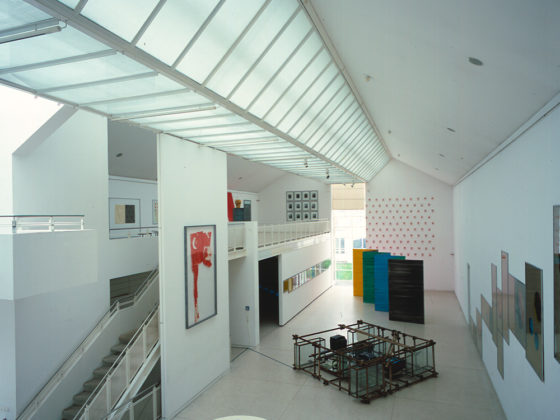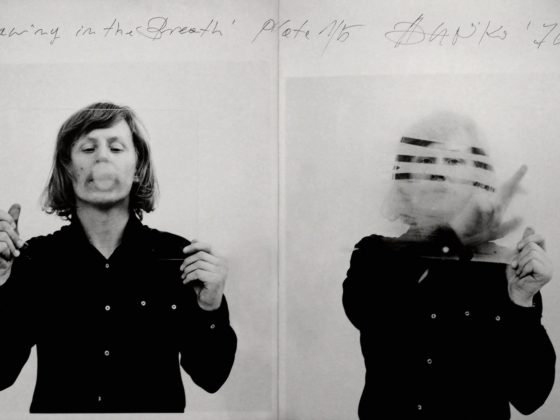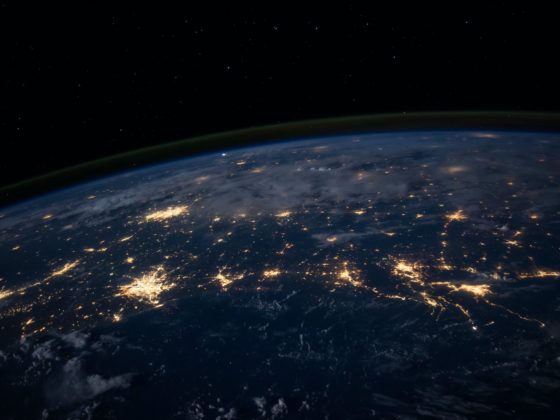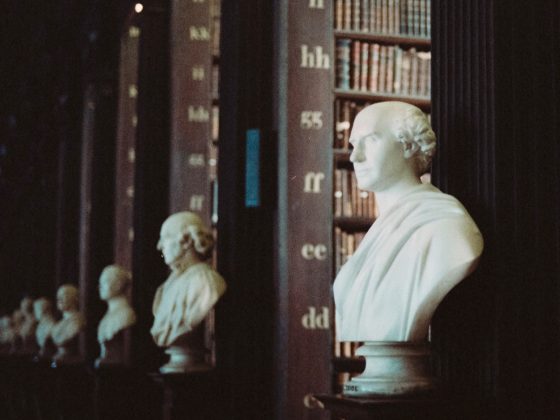To be able to talk about relations of artistic culture and globalisation we need to reach an agreement concerning a few rather fundamental issues.
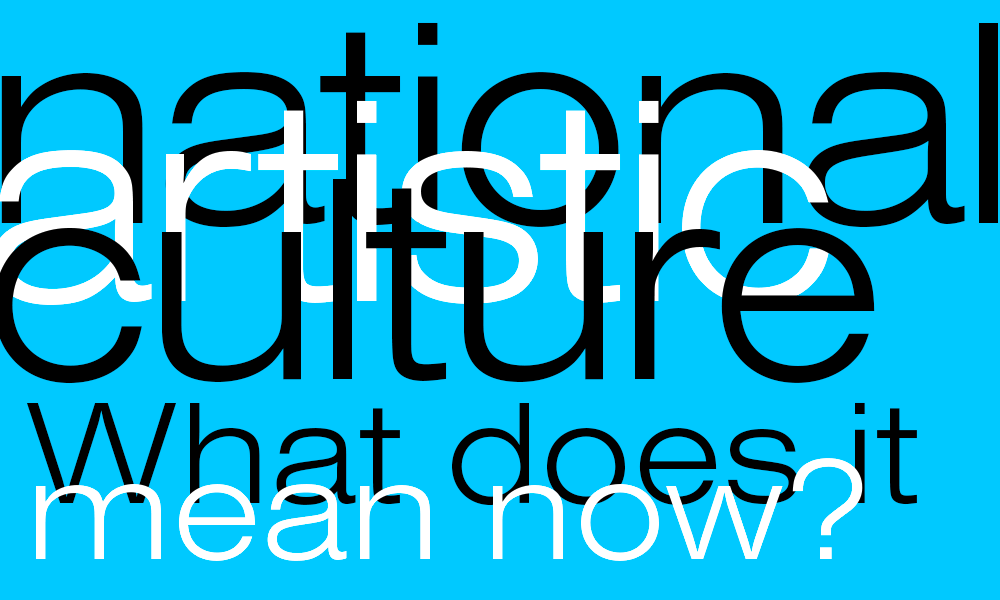
First comes the issue of concepts. I assume that while talking about artistic culture we are discussing norms and models of a symbolic character, and also talking about artistic practices and their audiences together with the concomitant institutions, and financial and legal systems. When we talk about globalisation we have in mind a certain economic process armoured with particular technological practices (technologies, mass media), together with legal/organisational and political systems and institutions (concerns, corporations, banks and international funds). And this is a process which is developing in the sphere of material culture and social praxis.
Secondly, it would be worthwhile to reach an understanding concerning the following issue: apart from material practices does globalisation possess its symbolic AURA (which it generates or draws from somewhere)? I am asking, whether we agree that the process of globalisation is accompanied by some norms and models, and if, in a broad perspective, it is accompanied by some kind of mentality. And whether there is a seed of value in globalisation? What kind of message, formulated in categories of symbolic culture (or in one of the categories of this culture: art, religion, science, play) accompanies these great economic/political processes?
Cultural (taken in its narrower sense of symbolic culture) attributes of globalisation have been analysed many times and presented extensively at the time when the globalisation was triumphant and presented as the presage of the end of history, and a kind of lay salvation. Technical sciences were sanctifying the progress of communication technologies in the social/political category of a communication society, economic sciences were developing extensively due to the knowledge of management, humanities got us cultural studies as a kind of integrated humanities, oriented not so much towards resolving the issues of truth and falsehood but towards undermining claims regarding truth, and carrying out unending interpretation and discourse. Art, searching for its place in the context of the globalisation processes, found itself also in the orbit of such humanities, utilising this inheritance from avant-garde, which exploited its critical potential, or its other aspect – the attribute of market commodity. With the latter, it has written itself into the logic of the world’s free market. “Play” is experiencing its golden years both as a fully commodified toy (best symbolised by Barbie and Lego blocks), and also in diverse, playful forms of pop-culture, in the electronic games and sport.
The role of the dark beast of the globalisation was ascribed to the one of fundamental categories of the symbolic culture – to religion. The place of religion (especially the source religion of the Western civilisation – Christianity) in globalisation processes needs to be thoroughly examined. Here – simplifying the problem – I will point at certain glaring and generally discussed facts concerning critical attacks on the Christian symbols. On the other hand, Islam has become a symbol of an obstacle on which the globalisation has stumbled. 11 September has become a symbolic time marker of a certain stage of its expansion. If in the symbolic aura of globalisation we are to search for religion, it would have been, no doubt, its contemporary mutation, for example scientologists.
re to try to give a positive answer to the second question posed at the beginning of this paper, and synthesise the symbolic, cultural AURA of globalisation, then it will comprise an idea of communication society (which in practice means a general access to the Internet and mobile phones) equipped with highly developed schools of economy and cultural studies departments at the universities, and the studios of critical art, together with the departments of the theory of marketing in the academies of fine arts. We can also add here the fitness clubs and possibly some scientologist chapels as places of the religious cult.
The artistic culture of globalisation, and specifically art, would comprise, apart from the already mentioned main critical and commercial trends also such old institutions as the Venice Biennale, Kassel … and new international art exhibitions, great international collections and, above everything, auctions and art fairs.
Is globalisation endowed with some other values? My answer is – yes. It is enough to mention pluralism, tolerance, and freedom of the individual, safeguarded by human rights. Can we find in it the seeds of those values, which contributed in a significant way to the emergence and growth of the European civilisation, values such as: responsibility for one’s own deeds (and for the others), solidarity with other human beings, self-limitation, self-sufficiency? My answer is – rather not.
Finally – the most important issue: values endure due to a certain mental construction in which they exist as elements of the spiritual world and therefore have a certain autonomy from the material, economic world. They were internalised (in a syncretic way written into these being), or had a transcendental anchorage. The weakness of the symbolic (not to say spiritual) AURA of globalisation lies in the problem of its legitimisation. Let us ask the simple question: who wants to die for globalisation? It seems that nobody wants to, but they do – enough to mention American, English and Polish soldiers. In contrast, the Arabs genuinely want to die, but a g a i n s t and not for globalisation.
Well, it is no secret today that there are problems with globalisation. Those problems are caused – to a large extent – by the very weakness of the symbolic AURA and of the axiological anaemia. Alongside pluralism there should be solidarity, parallel to tolerance there must be strong commitment, beside profits derived from the freedom of an individual, self-limitation is also important.
This state of affairs brings about new problems and new themes in the debate about culture, analysed not so much in the context of globalisation but, simply, globally. And does the answer to the crises of general globalisation lies in the efforts of smaller economic/cultural units to bring order into the world culture by developing specific new localisms? We know that they exists – the heated argument between Europe and America, the emerging Asiatic continent, so far pluralised by such powers as China and India, not to mention the powerful Japan… And there is the generally known dispute concerning the cultural AURA of Europe.
In this situation it makes sense to ask again about national cultures (understood today, at least in Europe, as democratic civic communities).
The national state (not in the ethnic sense but in the sense of citizens’ community), seen as a political, organisational, administrative community has been, so far, the largest and efficient “organisation”, underwriting the values mentioned above. . National culture as a set of values, together with their organisational hinterland – institutions, forms of education and popularisation – constitutes an affluent and efficient system of a specific syncretism of matter and spirit. Artistic culture has been written into this system, and in this sense we could talk about national artistic culture, as an arrangement of artistic/aesthetic norms and models, artists and their public, institutions of art, forms of financing of art and legal regulations.
So how the different local reservoirs, traditionally bound to the state (German, French, Swedish, Norwegian, Lithuanian, Polish…) could enrich the global axiological space and how art could work in this complex system?
Jan Stanisław Wojciechowski
Artykuł publikowany w ramach Programu Operacyjnego Promocja Czytelnictwa
ogłoszonego przez Ministra Kultury i Dziedzictwa Narodowego



